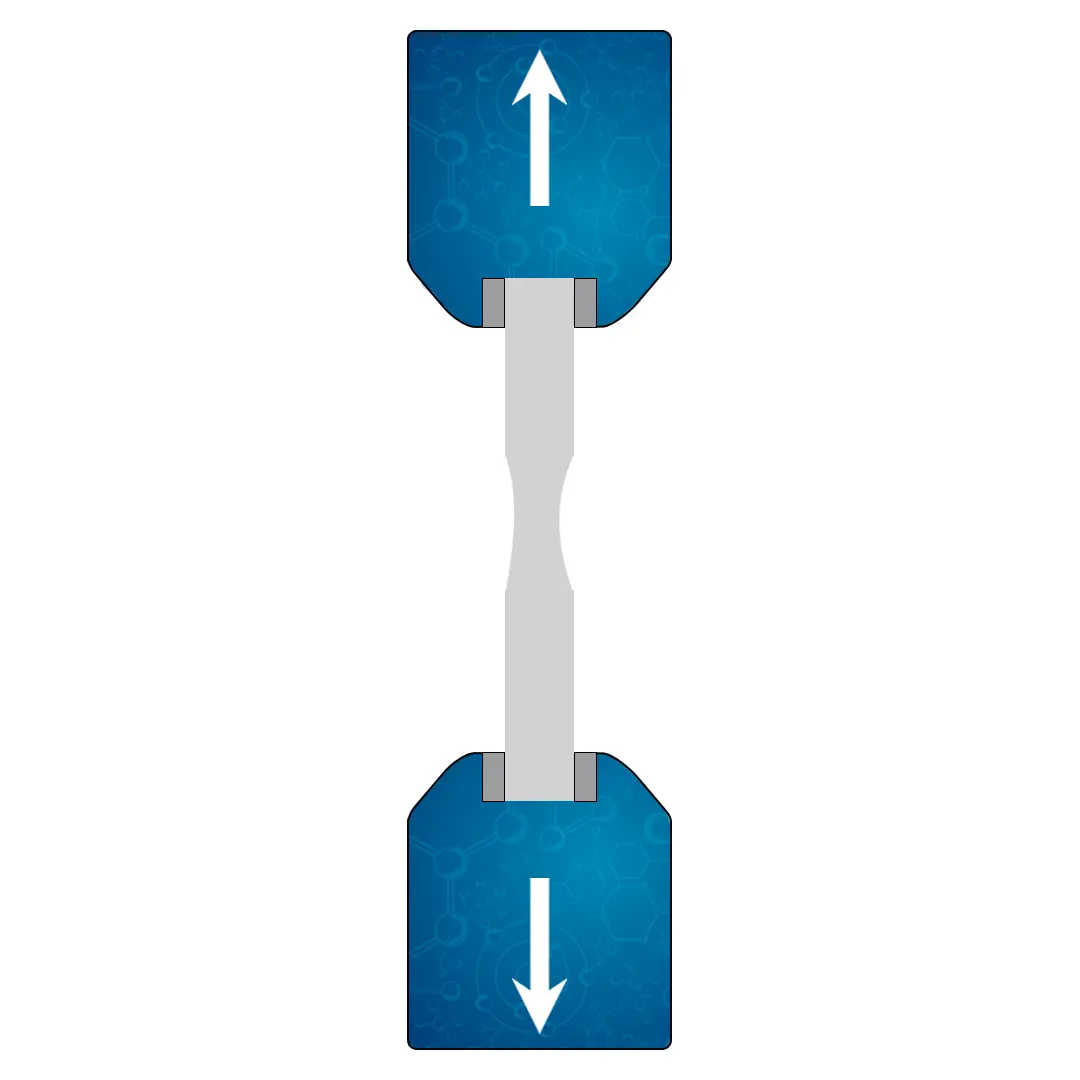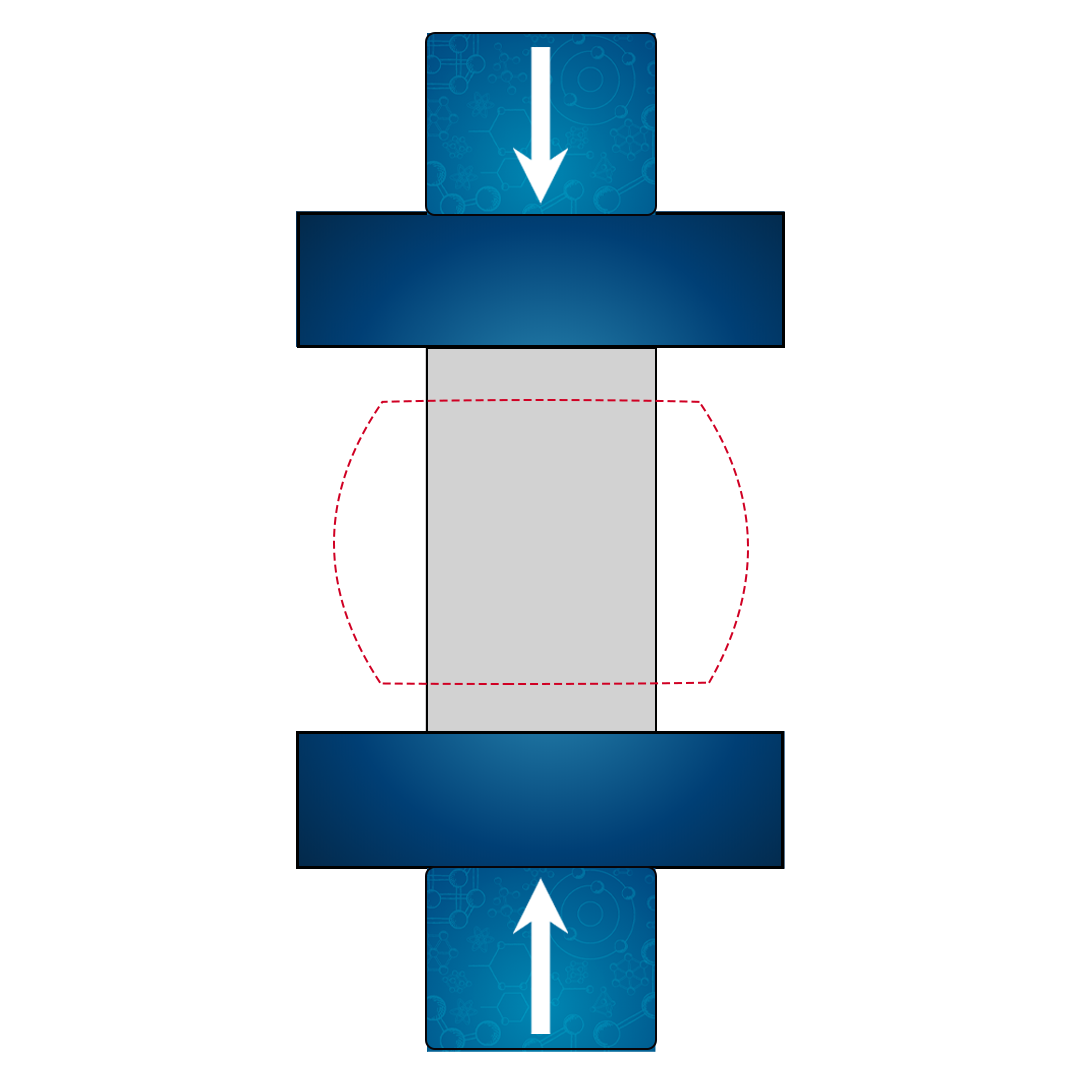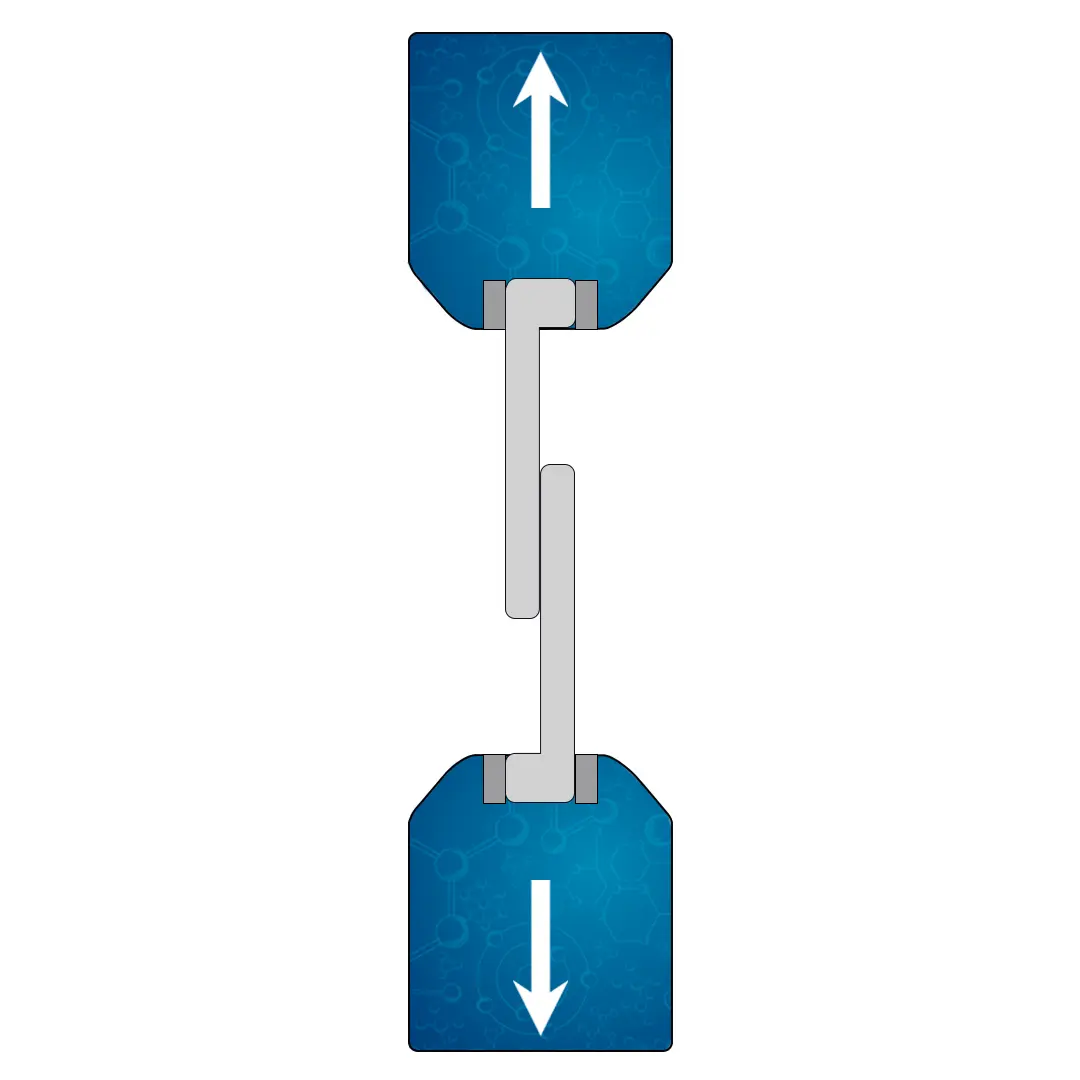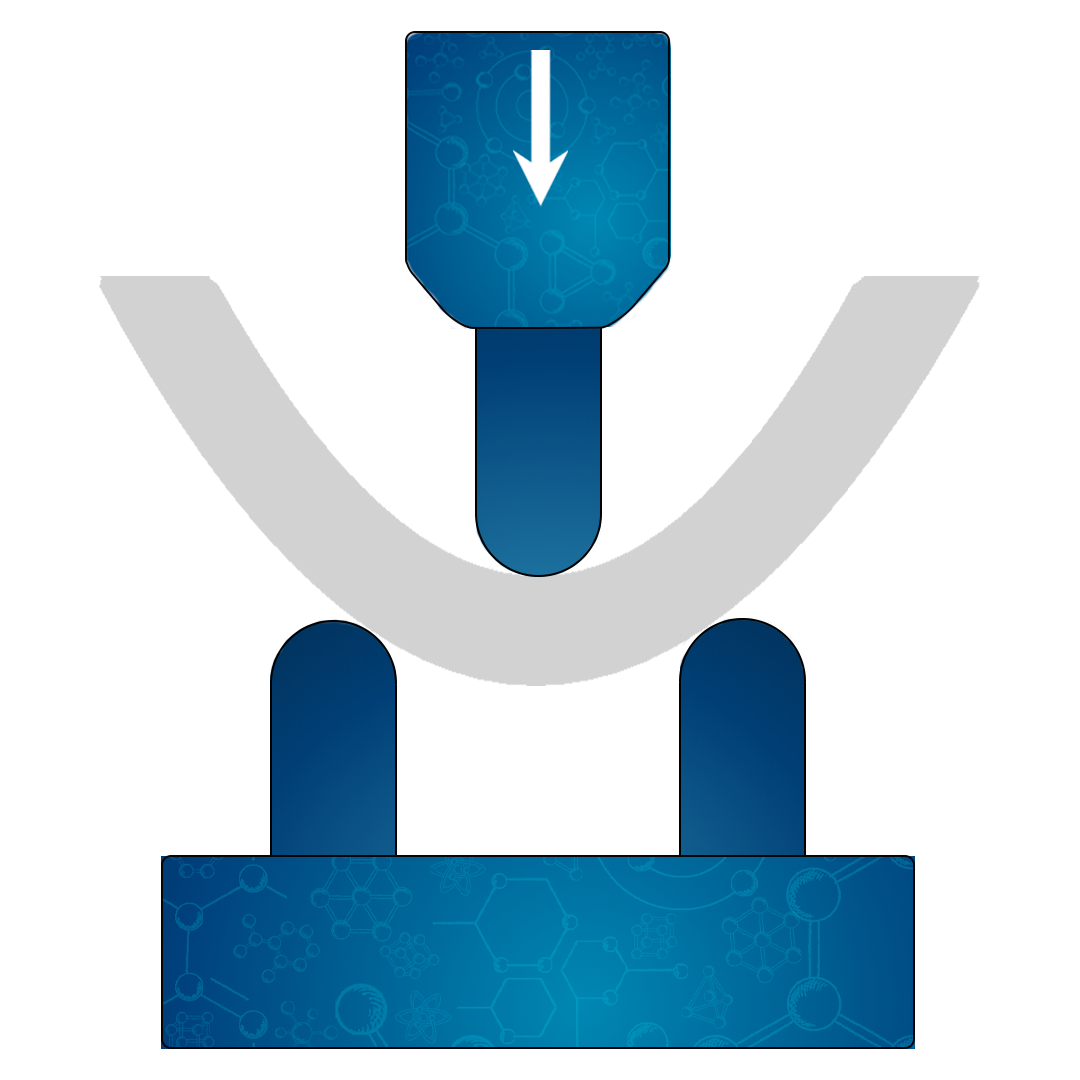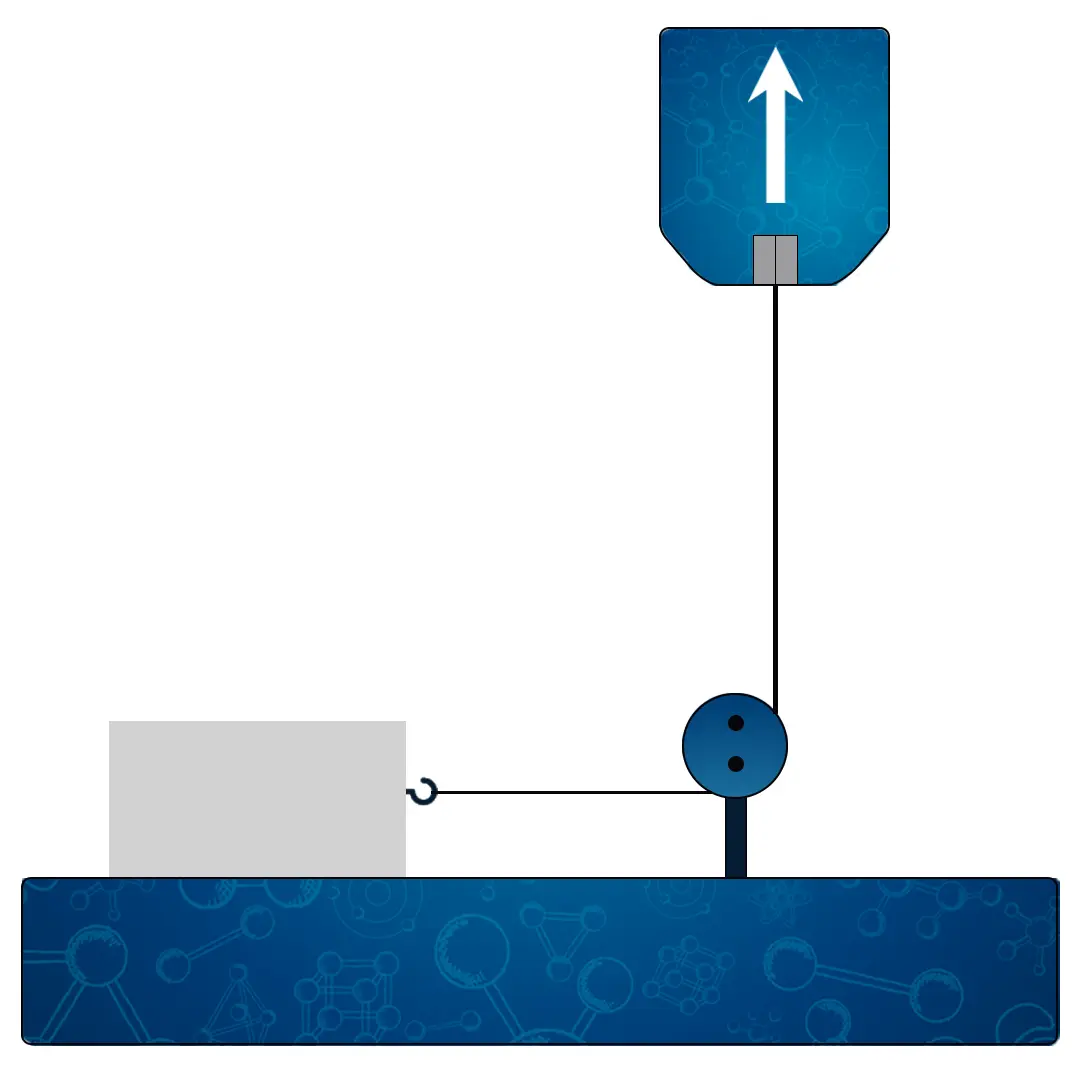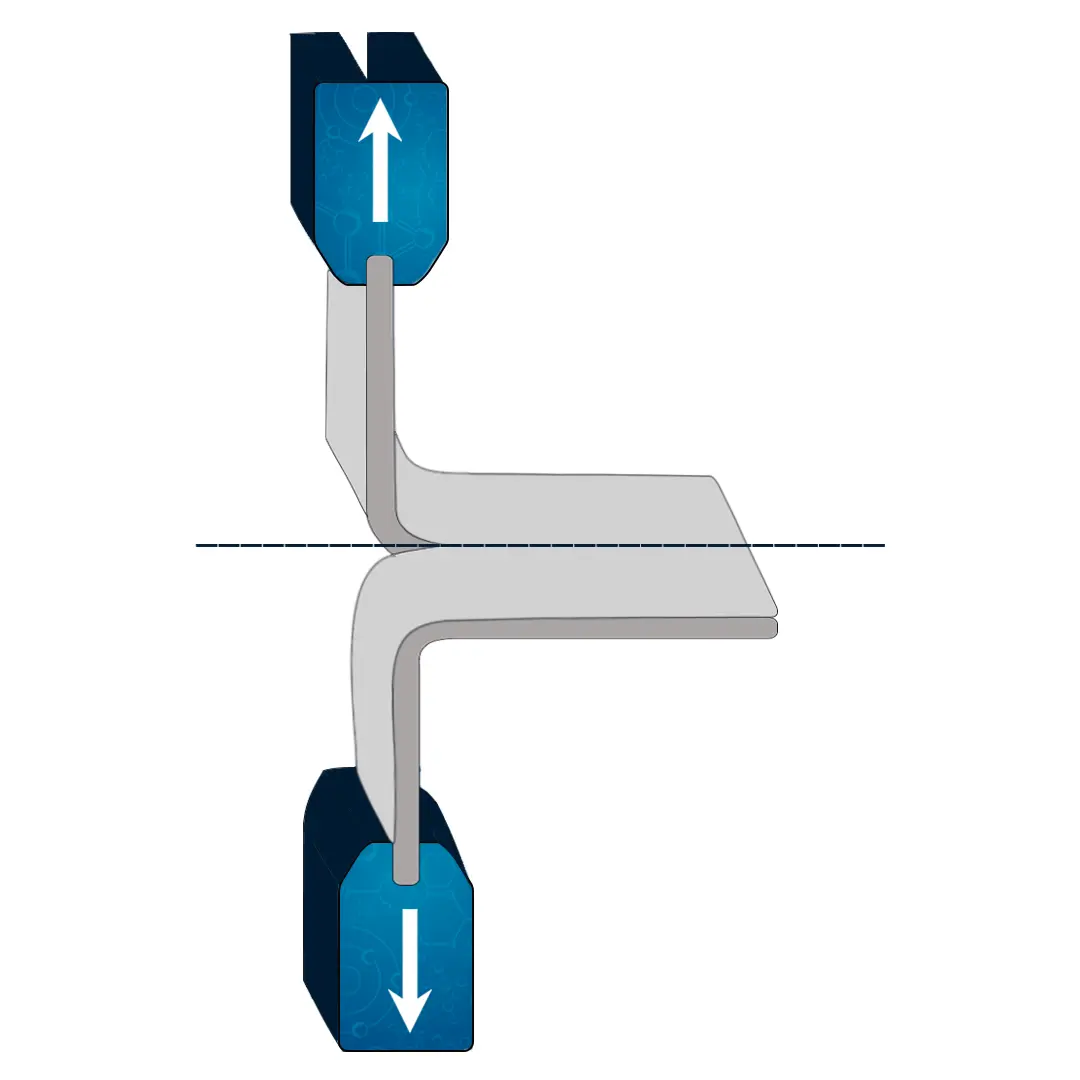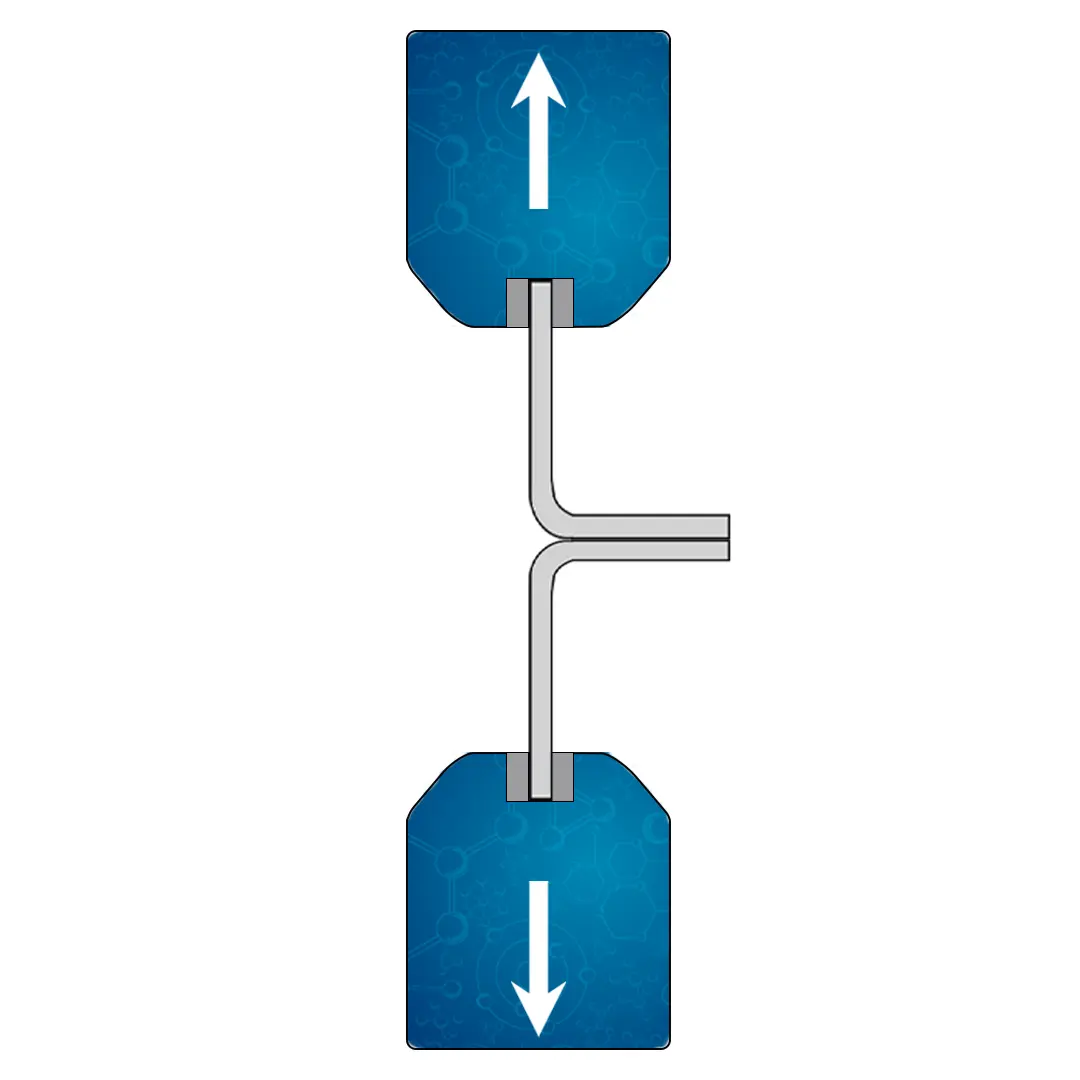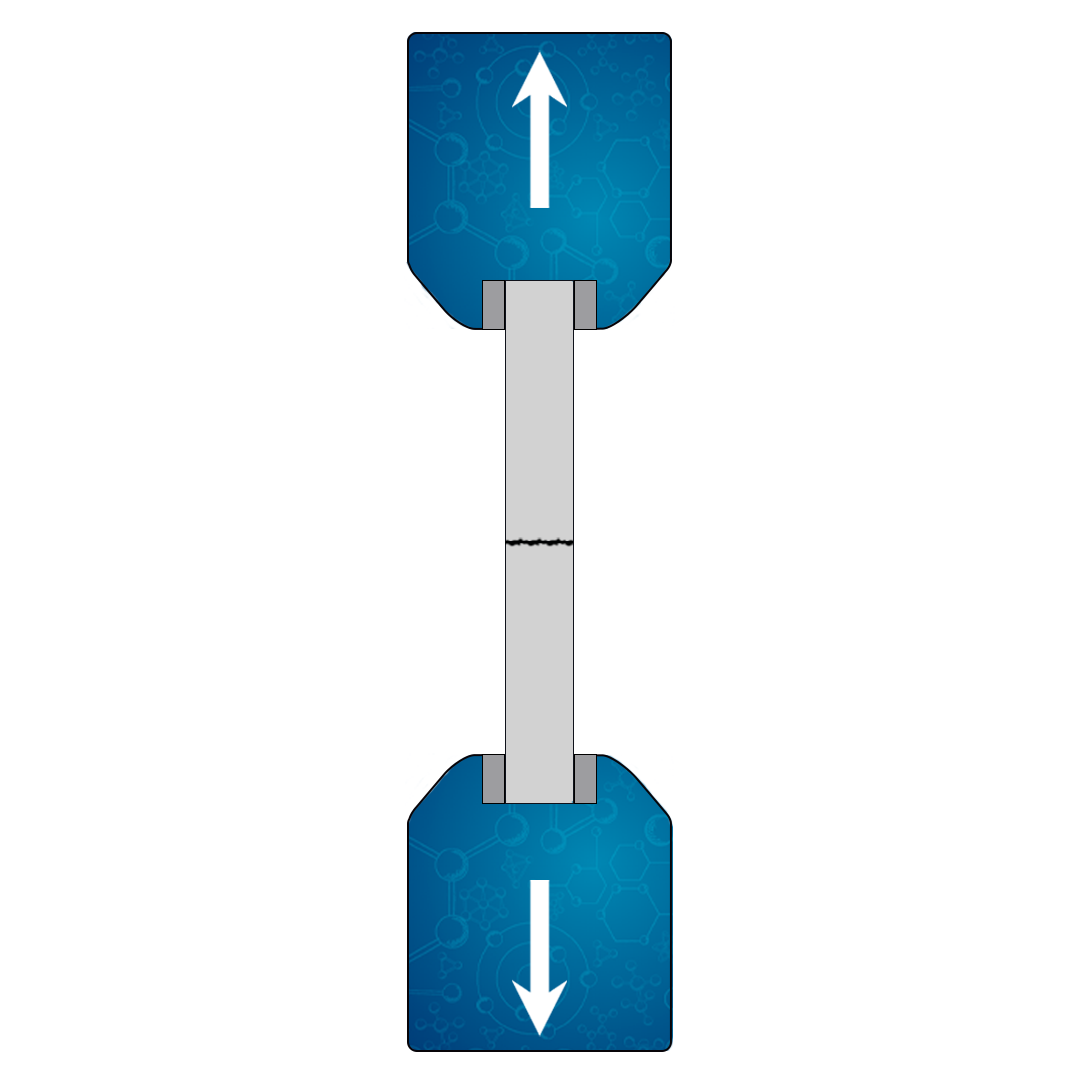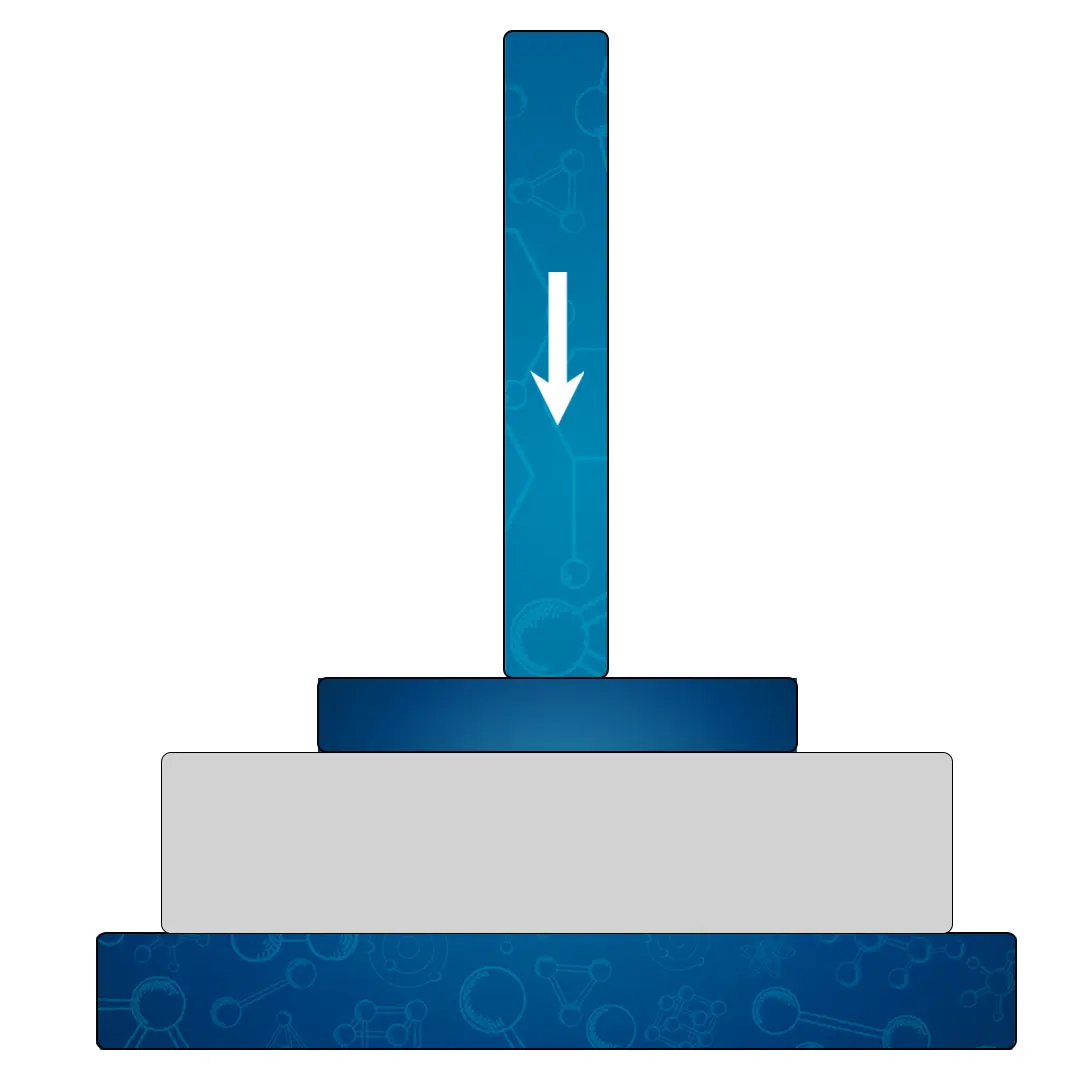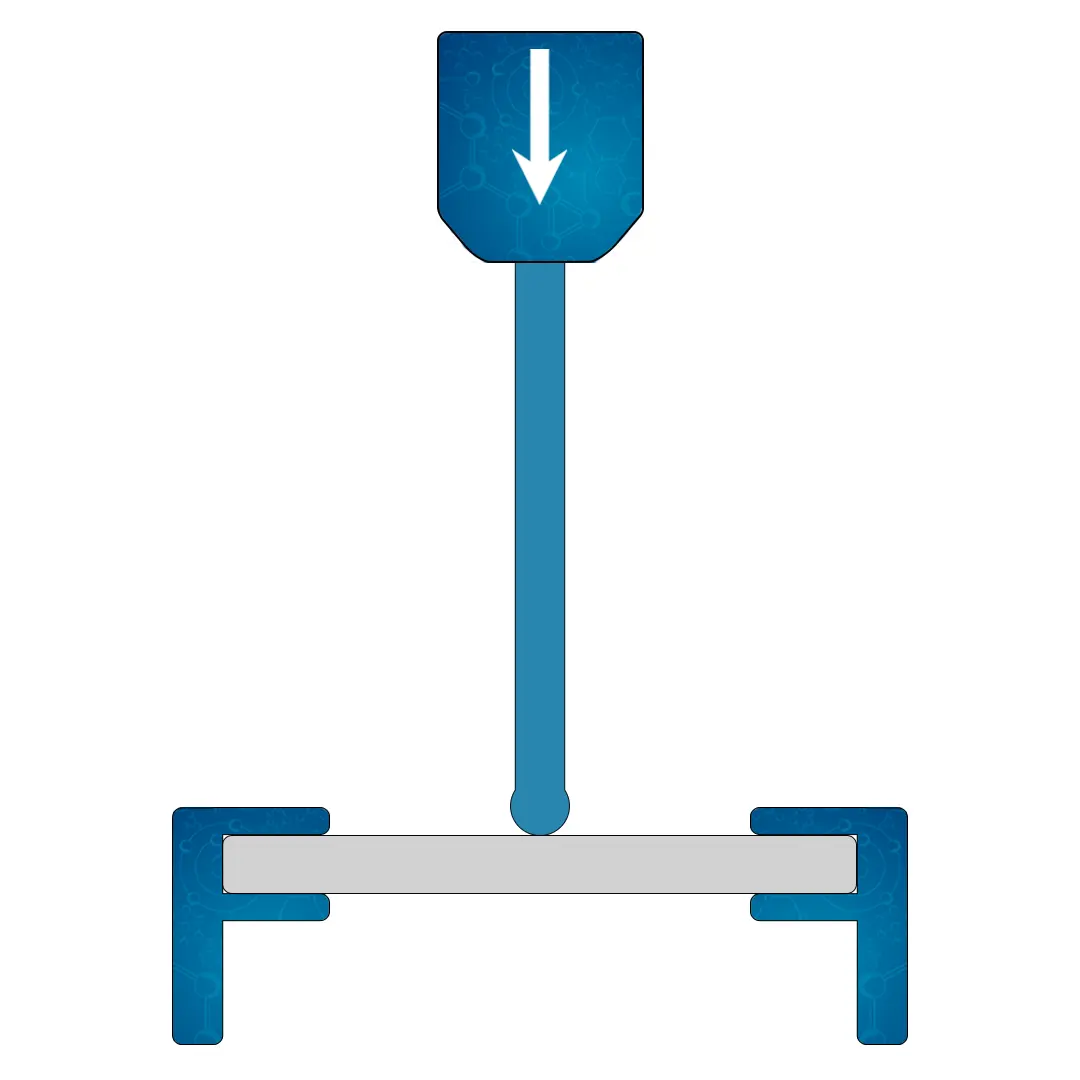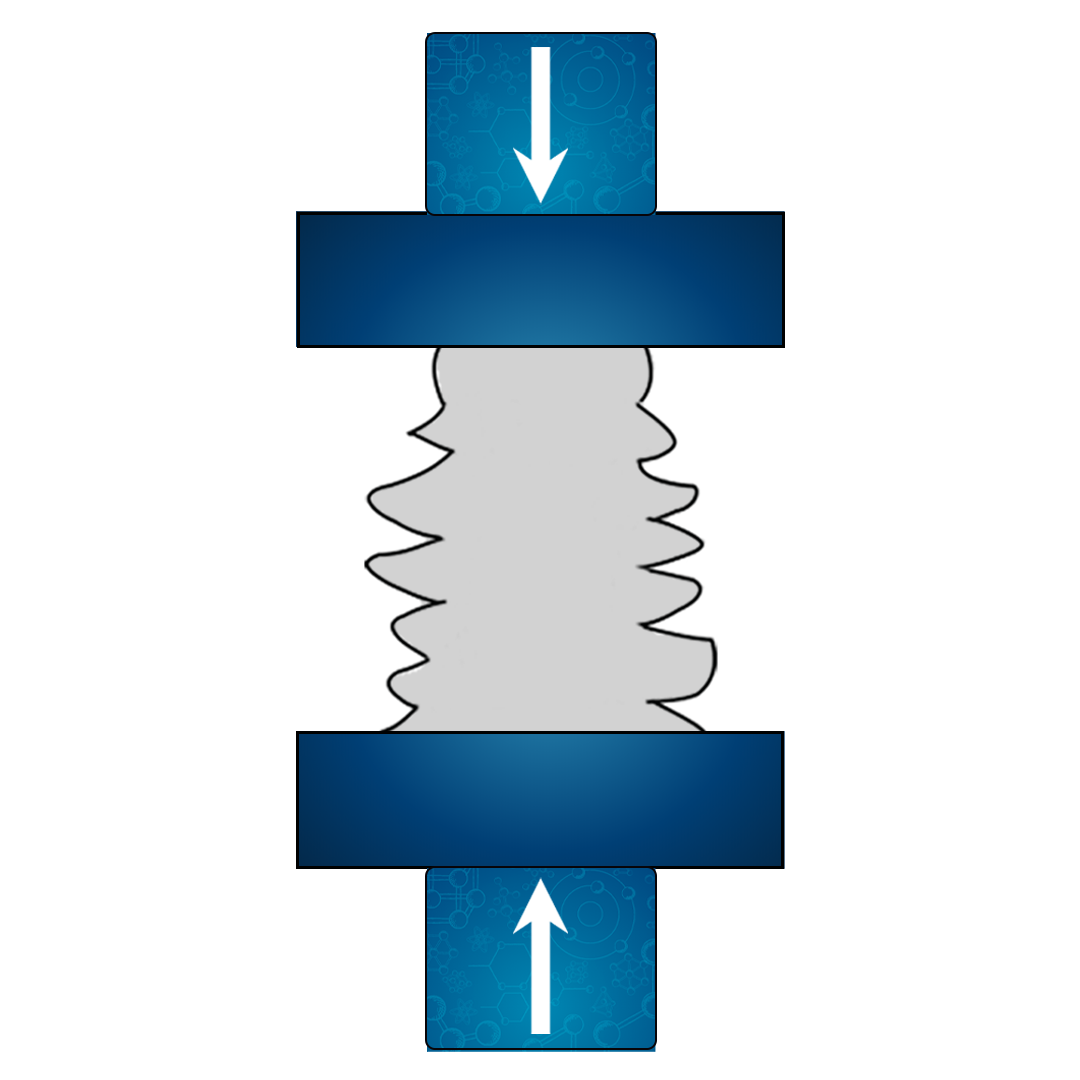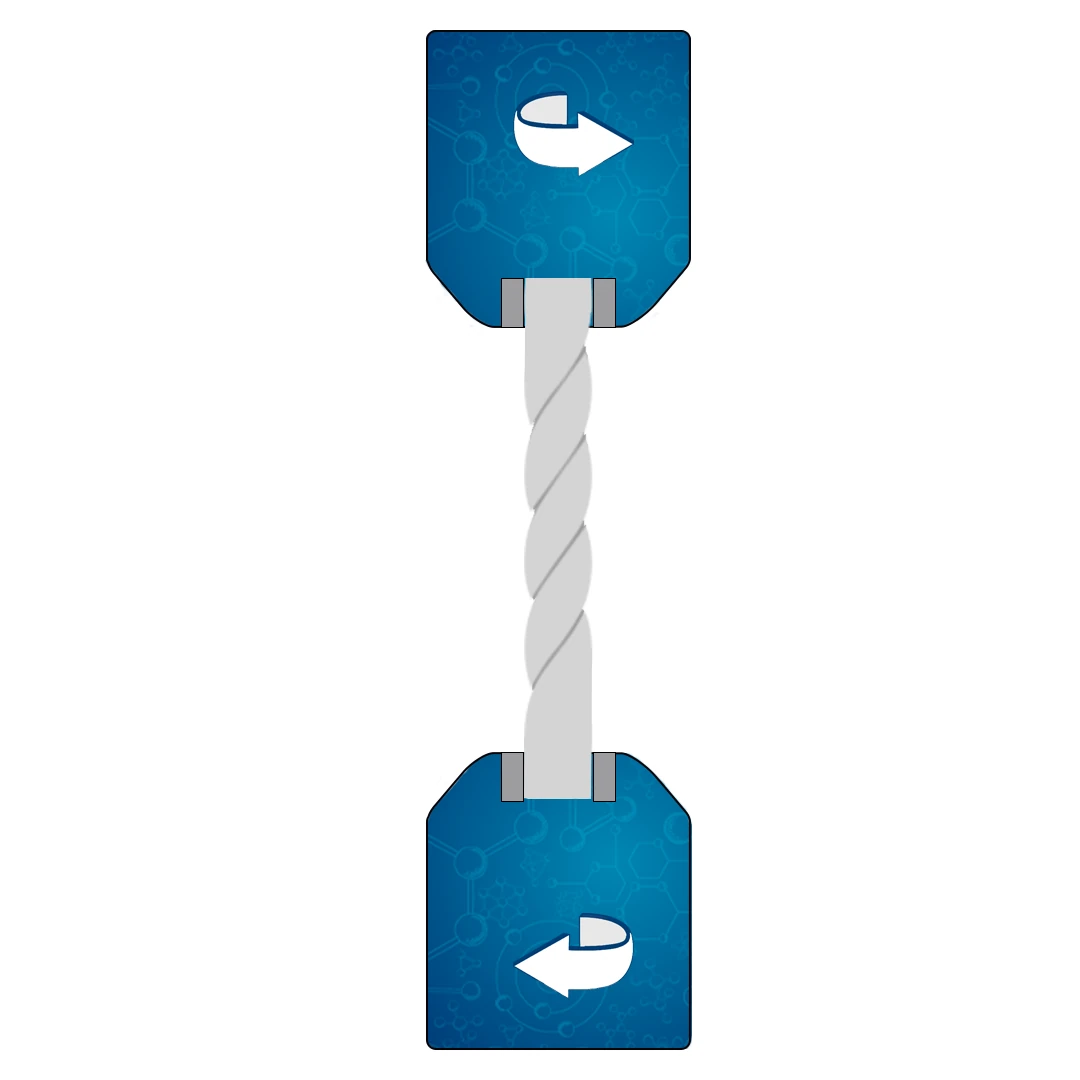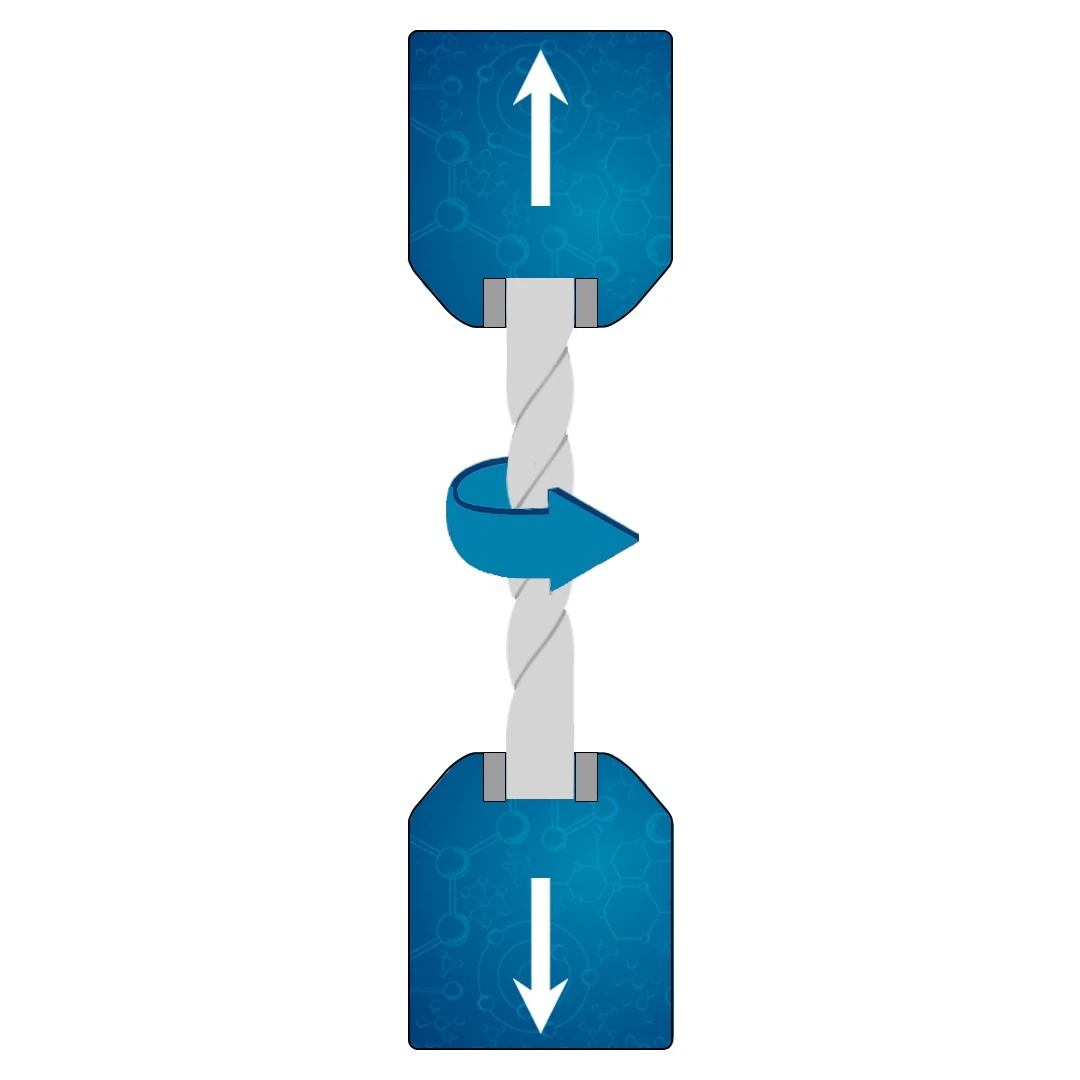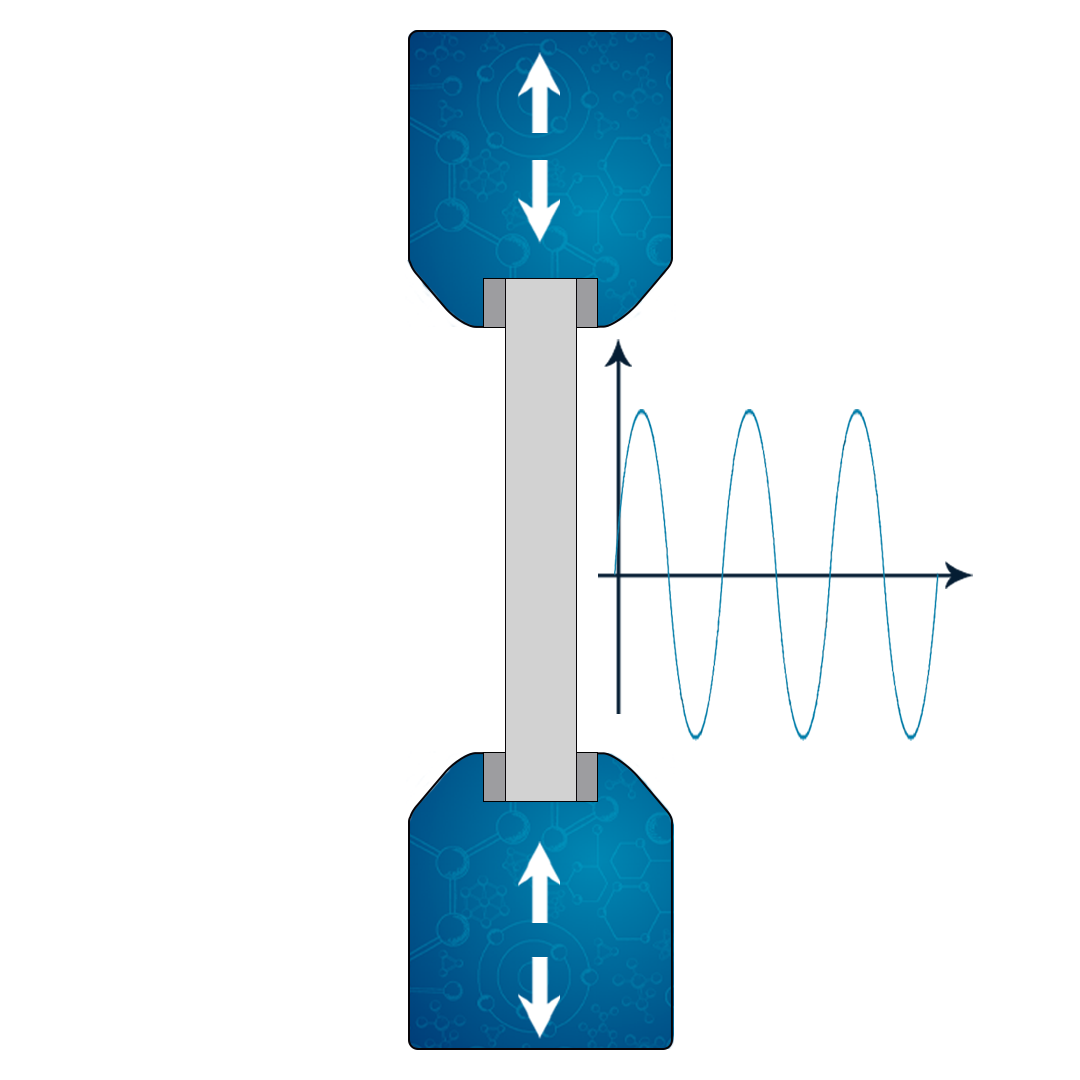Flexural Testing: A Comprehensive Guide to Strength Testing and Mechanical Properties of Materials.
Flexural testing is one of the main mechanical tests used in engineering and materials science to evaluate the mechanical properties of a material when subjected to an applied load that induces bending. This test plays a fundamental role in the analysis of the structural behavior of materials, allowing for an understanding of their strength, stiffness, and ability to withstand applied loads.
In this article, we will explore flexural testing in detail, covering various important topics related to this technique. In the following text, you will find a summary of the topics that will be addressed in this article.
What is Flexural Testing?
Flexural testing is a method used to evaluate the mechanical properties of materials subjected to bending or flexing. It involves positioning a sample (usually of a brittle or semi-brittle material) on supports and applying a load at specific points to induce bending. The test measures various properties like flexural strength, flexural strain, and flexural modulus, which help in understanding how the material will respond to bending forces in real-world applications.
The test can be conducted in different configurations, such as three-point or four-point bending, to simulate different loading conditions. Flexural testing is governed by specific international standards like ASTM D790 and ISO 178, ensuring consistency in procedures and results across different laboratories.
In essence, flexural testing is a vital tool in materials science and engineering, offering insights into the bending behavior of materials, informing material selection, design, and quality control across various industries.
Video about Flexural testing
Representation of a Flexural testing
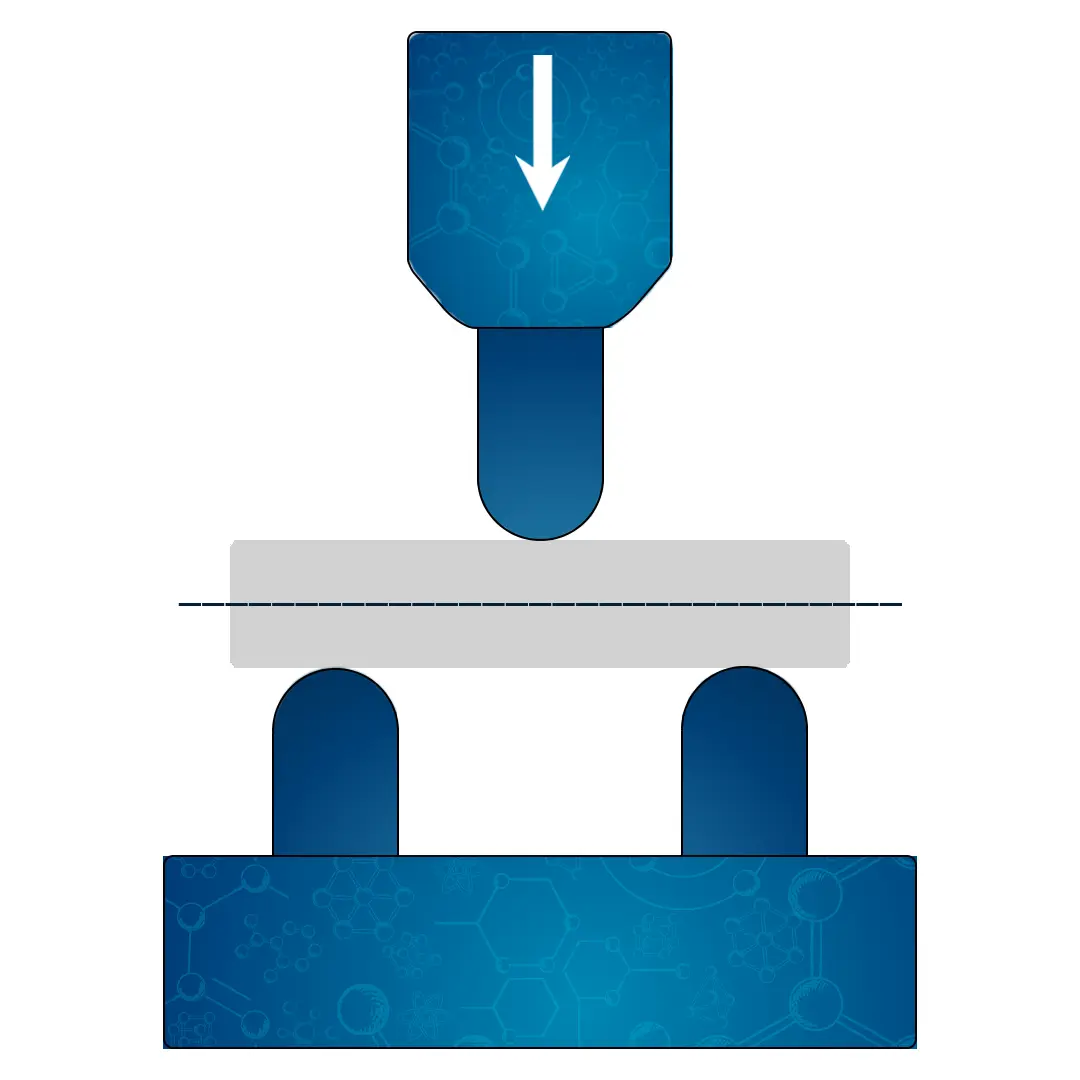
Types of Flexural Testing
There are different types of flexural tests that can be performed to evaluate the properties and strength of materials. The 3-point and 4-point flexural tests are common methods used to assess the bending properties and strength of materials. Both tests involve applying a load to a test specimen at specific points. Below, we will describe the main types of flexural testing:
Three-point flexural test
In the three-point flexural test, the load is applied at three support points on the test specimen. Two points are located in the support region, while the third point is placed at the center of the test specimen. This method is widely used to determine the flexural strength and stiffness of materials.
During the test, the test specimen is positioned on the two support points, creating a span between them. Then, the load is applied at the central point of the test specimen, causing it to deform under the load. The load is gradually increased until the material fails, such as fracture or excessive deformation.
The three-point flexural test allows for determining the flexural strength of the material, which is the maximum load the test specimen can withstand before failure. Additionally, it also provides information about the stiffness of the material, represented by the amount of deformation relative to the applied load.
Four-point flexural test
In the four-point flexural test, the load is applied at four support points on the test specimen. Two points are located in the support region, while the other two points are placed in the central region of the test specimen, symmetrically relative to the support points. This type of test is used to evaluate the flexural strength and load-carrying capacity at different points of the test specimen.
During the test, the test specimen is positioned on the two outer support points, creating a span between them. The load is applied at the central points, which are located within the span. This load distribution creates a centralized region of higher stress in the test specimen.
The four-point flexural test allows for a more precise analysis of the flexural strength and behavior of the material at different points. It also helps to reduce the effects of deficiencies or irregularities in the support points, providing more reliable results.
Both the three-point and four-point flexural tests are important for determining the mechanical properties of materials, such as flexural strength, stiffness, and load-carrying capacity. These tests are widely used in engineering and materials science to ensure the quality and safety of products and structures.
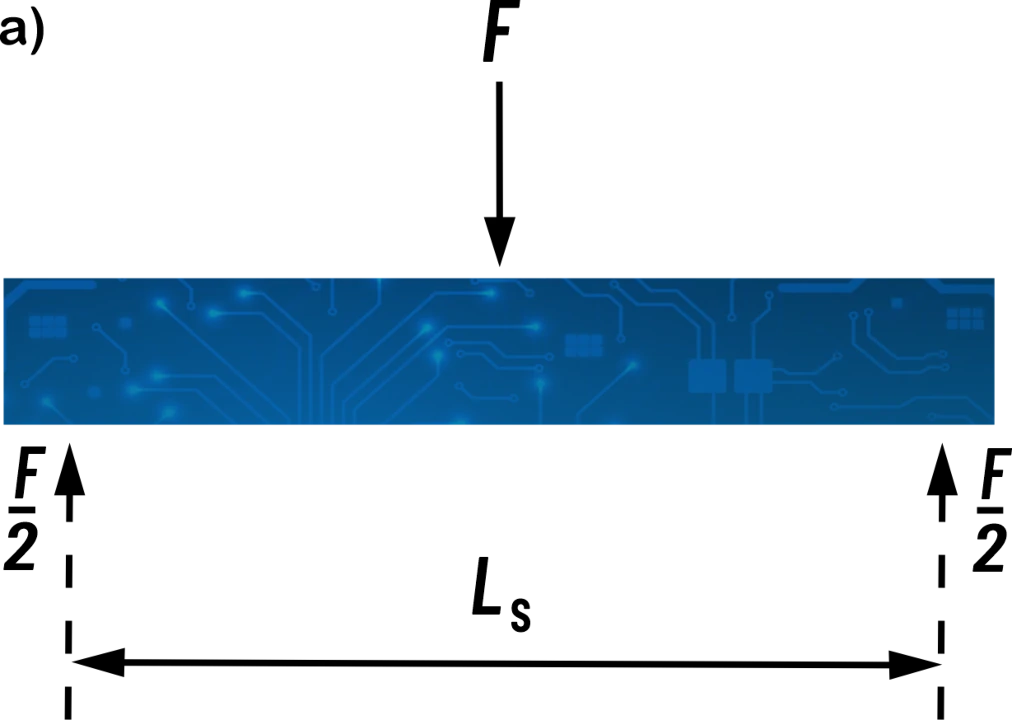
Three-point flexural test
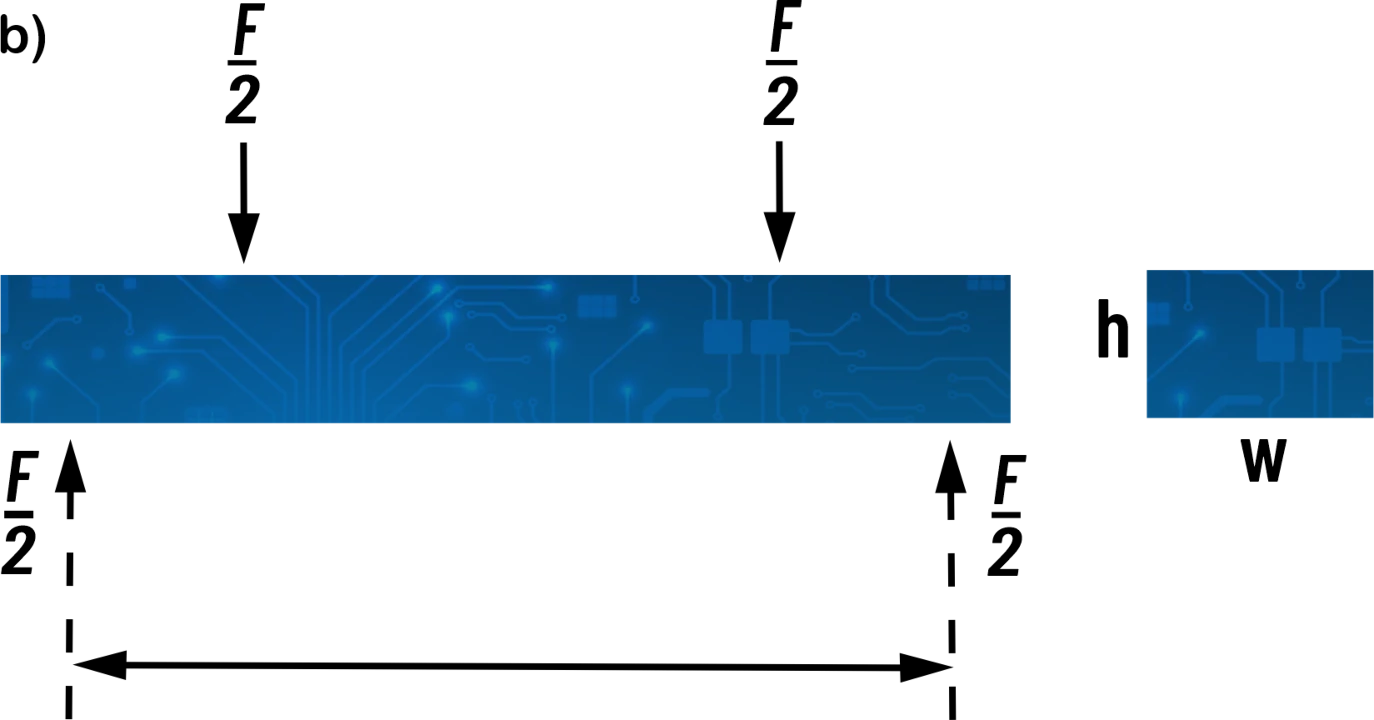
Four-point flexural test
Importance of Flexural testing
Flexural testing plays a significant role in materials science and engineering for several reasons, emphasizing the importance of understanding how materials behave under bending or flexural loads. Here’s an in-depth look at why flexural testing is essential:
- Material Characterization: Flexural testing provides critical data on properties such as flexural strength, modulus, and strain. These characteristics are vital for understanding how a material will respond to bending forces, allowing for more accurate predictions of its behavior in real-world applications.
- Quality Control: Manufacturers use flexural testing as a quality control tool to ensure that materials meet specific standards and specifications. Consistency in properties is essential for maintaining product integrity, and any deviation can lead to performance issues.
- Material Selection: Engineers and designers often rely on flexural testing data to select the most appropriate materials for particular applications. By understanding how different materials respond to bending, they can make informed decisions that optimize performance, durability, and cost.
- Failure Analysis: Flexural testing can also be used to investigate material failures in existing structures or products. By replicating the bending conditions that may have led to a failure, engineers can identify weaknesses or defects in the material or design, leading to more effective problem-solving and future prevention.
- Research and Development: Innovators in materials science use flexural testing to explore and develop new materials with specific bending properties. It’s an essential tool for understanding how alterations in composition, processing, or structure can influence a material’s bending behavior.
- Regulatory Compliance: Many industries are subject to regulations that require materials to meet specific performance criteria. Flexural testing ensures that products comply with these regulations, avoiding legal issues and maintaining consumer trust.
- Application-Specific Insights: In sectors like construction, aerospace, automotive, and electronics, where materials are often subjected to bending or flexing, flexural testing is crucial for ensuring that they will perform as expected under these specific conditions.
- Economic Considerations: Poor material performance due to incorrect bending behavior can lead to failures and increased maintenance costs. Flexural testing helps in selecting the right materials and designs, ultimately contributing to overall cost-efficiency.
Flexural testing is not just a laboratory exercise; it’s a fundamental aspect of the material development, selection, and application process. It bridges the gap between theoretical understanding and practical application, enabling industries to create products that are safer, more durable, and more efficient. The insights gained through flexural testing guide decisions that have far-reaching implications in various fields, from construction and transportation to healthcare and consumer goods.
Advantages of using the Flexural testing
Flexural testing offers several advantages in assessing materials, especially those likely to undergo bending or flexing. Here’s a detailed overview of the benefits:
- Versatility: Flexural testing can be applied to a wide range of materials, including plastics, composites, ceramics, glass, and even some metals. This makes it a valuable tool for many industries.
- Quantitative Analysis: The method provides quantitative data on essential properties like flexural strength, modulus, and strain. These numbers allow for precise comparisons between materials and aid in the selection process for specific applications.
- Cost-Effective: Compared to other mechanical testing methods, flexural testing can be more cost-effective, particularly for brittle materials. It doesn’t necessarily require extensive sample preparation or specialized equipment.
- Failure Prediction: By determining the point at which a material fails under a bending load, engineers can predict how it might behave in real-world applications, allowing for better design and reduced risk of unexpected failures.
- Simulating Real-World Conditions: Flexural tests can be tailored to simulate the actual loading and environmental conditions a material might experience in service. This provides a more accurate understanding of how the material will perform in its intended application.
- Standards Compliance: Flexural testing is governed by international standards, ensuring consistency and comparability across different laboratories and industries. Adherence to these standards aids in regulatory compliance and quality assurance.
- Material Development: For researchers and manufacturers working on new materials, flexural testing provides essential insights into how changes in composition, processing, or structure affect bending behavior. This information is vital for the iterative process of material development and innovation.
- Quality Control: As a part of quality control procedures, flexural testing can quickly identify inconsistencies or defects in a batch of material, ensuring that only products meeting specific quality criteria reach the market.
- Non-Destructive Options: Although traditional flexural testing can be destructive, there are non-destructive techniques that allow for the assessment of larger structures or finished products without causing damage.
Flexural testing offers a comprehensive and versatile approach to understanding material behavior under bending loads. Its ability to provide quantitative data, predict failure, simulate real-world conditions, and adhere to international standards makes it an invaluable tool in material selection, design, quality control, and research. Whether for evaluating existing materials or developing new ones, the advantages of flexural testing make it a vital practice in various fields of engineering and manufacturing.
Properties obtained in the Flexural testing
Flexural testing is designed to provide insight into several critical properties of a material that are related to its behavior under bending or flexing conditions. These properties allow engineers, researchers, and designers to understand how a material will perform in its intended application. Here are the key properties that can be obtained through flexural testing:
Flexural Strength
Flexural strength is the maximum stress a material can withstand without breaking during bending. It provides an understanding of the material’s resistance to deformation under a bending load and is particularly vital for brittle materials that might fail under bending forces.
Flexural Modulus (Modulus of Elasticity)
The flexural modulus quantifies the stiffness of a material under bending. It’s the ratio of stress to strain in the elastic region of the material and helps in determining how much a material will deform under a given bending load. Higher flexural modulus values indicate stiffer materials that resist deformation.
Flexural Strain
Flexural strain measures the deformation of the material under bending, relative to its original dimensions. It helps in understanding how much a material will bend or stretch under specific loads, providing insight into its flexibility and ductility.
Flexural Yield Strength
For some materials that exhibit yielding behavior, the flexural yield strength is the stress at which the material begins to deform plastically. This information helps in understanding when the material transitions from elastic to plastic behavior under bending loads.
Flexural Fatigue Properties
In cases of continuous or cyclic bending tests, the material’s fatigue behavior under repeated bending loads can be assessed. This property is essential for applications where the material will be subjected to continuous or oscillatory bending forces, such as in machinery or vehicle components.
Stress-Strain Curve
The stress-strain curve obtained from flexural testing provides a comprehensive view of the material’s behavior under bending, from initial loading to failure. It includes information about elastic and plastic regions, yield points, and ultimate strength, allowing for a complete characterization of the material’s bending response.
Resilience and Toughness
These properties provide insight into the material’s ability to absorb energy during deformation. Resilience is related to the capacity to absorb energy in the elastic region, while toughness considers the entire area under the stress-strain curve, including plastic deformation.
Temperature and Environmental Effects
Specialized flexural tests that include controlled temperature or environmental conditions can reveal how these factors influence the bending properties of the material. This information is vital for applications where materials may be exposed to extreme temperatures or aggressive environments.
Flexural testing offers a comprehensive evaluation of a material’s behavior under bending or flexing conditions. From basic properties like strength and stiffness to more complex characteristics like fatigue behavior and environmental effects, the insights gained through flexural testing inform material selection, design, quality control, and failure analysis across a wide range of industries and applications.
How to calculate the Flexural testing?
Calculating the results of a flexural test involves using specific formulas to determine various properties such as flexural strength, flexural modulus, and others. Here’s how you might typically calculate these values:
Flexural Strength
The flexural strength, also known as the modulus of rupture, is calculated using the formula:
for a three-point bending test, where:
- F is the maximum load applied (N)
- L is the support span length (mm)
- b is the width of the specimen (mm)
- d is the depth of the specimen (mm)
Flexural Modulus (Modulus of Elasticity)
The flexural modulus can be calculated using the formula:
where:
- is the deflection corresponding to the load (mm)
- Other variables are as defined above.
Flexural Strain
Flexural strain can be calculated using:
Other Calculations
Some other properties might require more complex calculations, possibly involving the integration of the stress-strain curve or the use of specialized equipment to measure specific values (such as deflection under load).
Important Considerations
- The above formulas are for a standard three-point bending test on a rectangular specimen. Other configurations or shapes might require different calculations.
- The material’s behavior (e.g., linear or nonlinear, elastic or plastic) may affect the calculations.
- Care must be taken with units, and consistency is required to obtain valid results.
- Standard testing procedures (such as ASTM D790 for plastics) should be followed, as these will provide specific guidelines on specimen preparation, testing conditions, and calculations for the material in question.
Differences between Flexural testing and Bend testing
Flexural testing and bend testing are both methods used to evaluate a material’s behavior under bending or flexing conditions, but they serve different purposes and have distinct characteristics. Here’s a comparison of the two:
Flexural Testing
- Purpose: Flexural testing is primarily conducted to determine properties like flexural strength, flexural modulus, and flexural strain. It provides quantitative information on how a material will behave under bending loads.
- Methodology: Flexural testing usually involves applying a load at one or more points on a specimen supported at two ends (such as in three-point or four-point bending tests). The load is increased until failure, or until a specific deflection is reached.
- Measurement: The focus is on precise measurements of load, deflection, and sometimes strain, to calculate specific properties such as flexural strength and modulus.
- Standards: Flexural tests often adhere to specific standards like ASTM D790 for plastics, which outline the exact procedures to follow for consistency and comparability.
Bend Testing
- Purpose: Bend testing is typically a qualitative test used to evaluate a material’s ductility, toughness, or brittleness. It’s often employed in quality control to ensure that materials or products meet specific bendability criteria.
- Methodology: Bend testing often involves bending a specimen to a specified angle or around a specified radius. The focus is on whether the material can withstand the bending without cracking or breaking.
- Measurement: The main measurement might be the angle to which the specimen can be bent without failure, or the appearance of cracks or defects after bending to a specific angle. Quantitative measurements like stress and strain are generally not the focus.
- Standards: Bend testing also follows certain standards, especially in applications like weld testing (e.g., ASME IX for welder qualification bend tests).
Key Differences
- Focus: Flexural testing is more focused on quantitative measurements to characterize material properties, while bend testing is often more qualitative, assessing whether a material meets specific bendability criteria.
- Application: Flexural testing is widely used for material characterization and selection, whereas bend testing is commonly used for quality control, such as in weld inspection or assessing ductility in metals.
- Methodology: Although both tests involve bending, the specific procedures, loading conditions, and measurements can differ significantly.
While both flexural testing and bend testing involve subjecting a material to bending loads, they are used for different purposes and provide different types of information. Flexural testing offers a detailed quantitative analysis of bending properties, while bend testing is often a more qualitative assessment of a material’s ability to withstand bending without failure. Understanding these differences is essential in selecting the appropriate test for a particular material, application, or research question.
Universal testing machine used in Flexural testing
A Universal Testing Machine (UTM), also known as a Universal Tester, is a versatile piece of equipment that allows testing various mechanical properties of materials, including bend testing. Here are the key components of a UTM used for flexural testing:
- Load Frame: The load frame is the main body of the UTM, typically consisting of two strong columns connected by a base and a crosshead. This rigid structure is designed to withstand high stresses during testing.
- Load Cell: The load cell measures the force applied to the specimen. It is an essential component of the UTM, providing precise measurements of load and stress.
- Extensometer: While not always used in bend tests, an extensometer can be useful to measure the deformation or displacement of the specimen.
- Test Bed (or Anvils): In bend tests, the specimen is supported on two points (or anvils) on the test bed, over which the load is applied.
- Loading Jig (or Mandrel): The loading jig or mandrel is used to apply a load to the specimen. During a bend test, the load is applied to the center of the specimen, causing it to bend.
- Control Unit: The control unit, often computerized, controls the movement of the crosshead (and thus the force applied) and collects data from the load cell and extensometer. It allows the operator to define parameters such as the loading rate and the maximum load.
- Software: The UTM software enables the user to set up the test, control the testing process, and analyze the collected data. It generates stress-strain curves, calculates material properties, and provides detailed test reports.
The configuration and components of a UTM can vary based on the specific model and the testing requirements. For flexural testing, it’s crucial to have the right fixtures (like the test bed and loading jig) to properly support the specimen and apply the load.
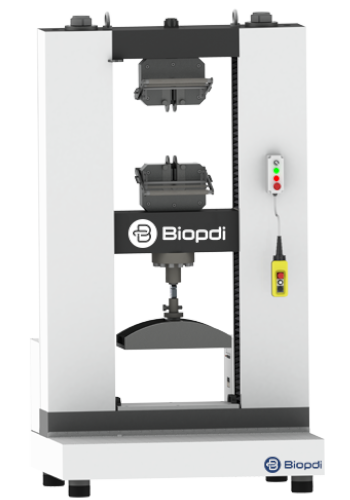
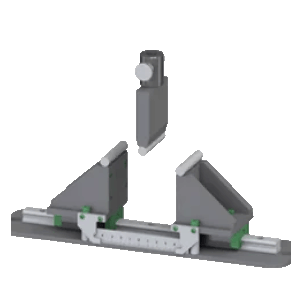
Procedures for conducting a Flexural testing using a Universal Testing Machine.
Conducting a flexural test using a Universal Testing Machine (UTM) is a meticulous process that needs precise planning and execution. Here’s a typical procedure:
- Sample Preparation: The specimen must be prepared to the specific dimensions and shape required by the relevant standard (e.g., ASTM or ISO). Any irregularities can significantly affect the results.
- Setting Up the UTM: The UTM must be equipped with the appropriate flexural test fixture, either for three-point or four-point bending, depending on the requirements.
- Calibration: The machine should be calibrated to ensure that force and displacement measurements will be accurate.
- Load Configuration: The loading rate, maximum load, and other parameters must be set according to the material and standard being used.
- Placing the Specimen: The specimen is carefully placed on the supports, ensuring that it’s aligned correctly to prevent any twisting or other misalignment.
- Applying the Load: The load is applied at a controlled rate, either at a single point (three-point bending) or two points (four-point bending), while supports hold the specimen at two other points.
- Monitoring and Data Collection: As the load is applied, the UTM records data such as load, displacement, and time, which is used to calculate flexural properties.
- Analyzing the Results: After testing, the collected data is analyzed to determine the flexural strength, modulus, strain, elongation, etc.
- Documentation: A detailed report is generated, including all the parameters, settings, calculations, and results, often accompanied by a graphical representation of the stress-strain curve.
- Safety Considerations: Throughout the process, safety procedures must be followed, especially when handling brittle materials that may fracture during testing.
The procedure can vary slightly based on the specific material and the standard being followed, but these general steps provide a solid framework for conducting a flexural test using a UTM. It’s a process that requires careful attention to detail, understanding of the material being tested, and strict adherence to the relevant testing standards.
Data obtained in the Flexural testing using the Universal Testing Machine
When conducting Flexural testing using a Universal Testing Machine (UTM), various data are obtained that give valuable insights into the material’s behavior under bending conditions. Here are the main types of data typically obtained:
- Flexural Strength: This represents the stress experienced by the material at the moment of failure during bending. It’s a key indication of how well a material can withstand bending forces.
- Flexural Modulus (Modulus of Elasticity): This measures the material’s stiffness during bending, calculated from the initial linear portion of the stress-strain curve.
- Flexural Strain: This is the amount of deformation experienced by the material in response to the applied bending forces. It is often measured in conjunction with flexural stress to construct a stress-strain curve.
- Elongation: The amount the material stretches before breaking, often expressed as a percentage of the original length.
- Deflection: This refers to the displacement of the material as it bends, giving insights into its flexibility and stiffness.
- Stress-Strain Curve: This graphical representation plots the relationship between applied stress and resultant strain, providing a comprehensive overview of the material’s behavior throughout the testing process.
- Yield Point (if applicable): Some materials exhibit a yield point where the material begins to deform plastically. Identifying this point helps understand when the material will undergo permanent deformation.
- Fracture Characteristics: Observations about the nature of the failure, such as brittle or ductile behavior, crack propagation, and failure mode, provide additional information about the material’s behavior.
- Load-Displacement Curve: This curve shows how the load changes concerning displacement, revealing critical details about the material’s response to loading.
- Test Conditions: Information regarding the testing conditions, such as temperature, humidity, and testing speed, might also be recorded, as these factors can influence the results.
These data points collectively provide a thorough understanding of how a material responds to bending forces, informing design decisions, quality control processes, and material selection for various applications. By understanding these aspects, engineers and scientists can predict how materials will perform in real-world conditions where bending and flexing are common, thereby ensuring that the right materials are chosen for specific applications.
The samples/specimens used to perform the Flexural testing in the Universal Testing Machine
The samples or specimens used for flexural testing in a Universal Testing Machine (UTM) must be carefully prepared and shaped according to the specific standards and guidelines related to the material being tested. Here’s an overview of common characteristics and considerations for flexural test specimens:
Shape and Dimensions:
- Most flexural test specimens are of a rectangular cross-section, although other shapes might be used depending on the material and testing standard.
- The dimensions, including length, width, and thickness, must be consistent with the relevant standard for the material being tested. For example, ASTM D790 for plastics specifies particular dimensions for the test specimen.
Material Type:
- The specimen should be representative of the material to be evaluated, whether it’s metal, polymer, ceramic, composite, or another material.
- It should be free from defects such as cracks, voids, or inclusions that might influence the test results.
Surface Finish:
- The specimen’s surface finish must be smooth and free of machining marks, as irregularities on the surface could affect the test outcomes.
- Any surface treatment or coating that is relevant to the application may be included but must be noted in the test report.
Orientation:
- If the material has anisotropic properties (different properties in different directions), the orientation of the specimen relative to the material’s structure must be considered and documented.
Environmental Conditioning:
- Some materials may require conditioning at specific temperature and humidity levels before testing to ensure that the material is at a stable and known state during the test.
- This is particularly common with polymers, where temperature and moisture can significantly impact the material’s behavior.
Specimen Number:
- Multiple specimens are often tested to obtain an average value and assess the variability in the material’s properties.
Standard Compliance:
- It’s crucial to prepare and handle the specimens according to the relevant standards (such as ASTM, ISO, etc.) for the material being tested.
- The standards provide specific guidelines for specimen dimensions, preparation methods, and testing procedures to ensure consistency and comparability of the results.
Example Specimen for Plastics (ASTM D790):
- Shape: Rectangular
- Length: 127 mm or 165 mm
- Width: 13 mm
- Thickness: 3.2 mm or 6.4 mm (dependent on material and application)
Overall, the choice and preparation of the specimen play a crucial role in obtaining accurate and reliable flexural testing results. By adhering to the appropriate standards and guidelines, engineers and material scientists can ensure that the testing accurately represents the material’s behavior in its intended application.
The main standards for Flexural testing
Certainly! Flexural testing standards vary according to different international organizations, industries, and materials. Here are five ISO and five ASTM standards that are commonly used for obtaining flexural properties.
ISO Standards
- ISO 178: Plastics – Determination of flexural properties. This standard outlines the method for determining the flexural properties of rigid and semi-rigid plastics under defined conditions.
- ISO 14125: Fibre-reinforced plastic composites – Determination of flexural properties. Applicable to composite materials reinforced with fibers, this standard specifies the procedures for determining the flexural properties.
- ISO 7438: Metallic materials – Bend testing. Though not a flexural standard per se, this standard deals with the bend testing of metallic materials and can be related to the flexural properties.
- ISO 15113: Plastics – Film and sheeting – Determination of flexural properties. This standard focuses on the methods for determining the flexural properties of plastic films and sheeting.
- ISO 6872: Dentistry – Ceramic materials. Applicable to dentistry, this standard includes methods for determining the flexural strength of ceramic materials used in dental applications.
ASTM Standards
- ASTM D790: Standard Test Methods for Flexural Properties of Unreinforced and Reinforced Plastics and Electrical Insulating Materials. This standard describes the method for testing the flexural properties of plastics and insulating materials.
- ASTM C78/C78M: Standard Test Method for Flexural Strength of Concrete. Utilized for concrete materials, this standard provides guidelines for determining the flexural strength of concrete specimens.
- ASTM C293/C293M: Standard Test Method for Flexural Strength of Concrete (Using Simple Beam With Center-Point Loading). Similar to ASTM C78, this standard outlines the procedures for testing concrete but with center-point loading.
- ASTM C1161: Standard Test Method for Flexural Strength of Advanced Ceramics at Ambient Temperature. This standard applies to advanced ceramic materials and describes the methods for determining their flexural strength.
- ASTM D6272: Standard Test Method for Flexural Properties of Unreinforced and Reinforced Plastics and Electrical Insulating Materials by Four-Point Bending. A counterpart to ASTM D790, this standard specifically details the four-point bending method for plastics and insulating materials.
These standards play a vital role in ensuring that flexural tests are carried out under consistent and controlled conditions. By adhering to these internationally recognized guidelines, scientists and engineers can obtain comparable and reliable results that are essential for material selection, quality control, and design across various applications and industries.
Applications of the Flexural testing
Flexural testing is a critical method for evaluating the behavior of materials under a bending or flexing load. This form of testing has widespread applications across various domains, allowing engineers, researchers, and manufacturers to understand how a material or component might behave in real-world conditions. Here are some of the main applications of flexural testing:
- Quality Control: Manufacturers use flexural testing to ensure that products meet specific strength and performance criteria. This is vital in industries where material failure could lead to safety issues, such as automotive or aerospace.
- Material Development and Selection: Flexural testing assists in characterizing new materials and comparing different materials for specific applications. It helps in understanding the stiffness, strength, and deformation characteristics under bending loads.
- Composite Material Analysis: In the aerospace, automotive, and marine industries, composite materials are commonly used. Flexural testing of these materials provides insights into their layered structures and the interfacial strength between the layers.
- Building and Construction: Flexural tests on construction materials like concrete, steel, and timber provide essential information about their ability to withstand bending forces. This data is critical for structural design and assessment.
- Medical Devices and Implants: Flexural testing is employed in the evaluation of materials used in medical devices and implants. It aids in understanding how these materials might respond to forces similar to those experienced within the human body.
- Electronic Components: In the electronics industry, flexural testing can be used to evaluate the bending properties of printed circuit boards (PCBs) and other components that might be subject to bending or flexing during use.
- Packaging Industry: Understanding the flexural properties of packaging materials ensures that they can withstand the stresses encountered during transportation and handling.
- Dental Materials: Dental restoratives, prosthetics, and other dental materials must endure repeated bending and flexing. Flexural testing helps in evaluating these materials for their long-term performance.
- Furniture and Consumer Products: Flexural testing is used in the evaluation of furniture and various consumer products to ensure that they can withstand normal use without deformation or failure.
- Environmental Impact Analysis: By performing flexural tests under different environmental conditions (such as temperature, humidity), researchers can understand how environmental factors might affect material properties.
- Failure Analysis: In cases where a material or component has failed in service, flexural testing can be part of a broader failure analysis to determine the cause of the failure.
- Educational and Research Purposes: Academia and research institutions utilize flexural testing to explore material science theories, study the behavior of novel materials, and develop new technologies.
In essence, flexural testing is a versatile tool that provides essential data across a broad spectrum of applications. It enables the assessment of a material’s ability to resist deformation and failure under bending loads, influencing everything from product design and manufacturing to safety and performance standards.
Additional information about Flexural testing
Flexural testing is a complex and multifaceted examination that provides valuable insights into material behavior under bending loads. Here’s some additional information that might deepen your understanding of this important method:
Methods of Flexural Testing:
- Three-Point Bending: This is the most common method where the load is applied at a single point, and the specimen is supported at two other points.
- Four-Point Bending: This method uses two loading points and two support points, providing a more uniform moment across the specimen.
- Other specialized methods and fixtures can be designed for particular materials and applications.
Factors Influencing Results:
- Geometry of the Specimen: Dimensions and shape can significantly affect the results.
- Material Properties: Temperature, humidity, and other environmental factors can influence the material’s behavior.
- Rate of Loading: Different materials respond differently to the rate at which the load is applied.
Instrumentation and Technology:
- Advanced Universal Testing Machines (UTMs) equipped with precise controls, and measurement devices are used for accurate results.
- Automation and software integration have improved the efficiency and repeatability of tests.
Standards and Compliance:
- Adherence to international standards like ISO and ASTM ensures consistency and comparability between different tests and laboratories.
Limitations and Considerations:
- Flexural properties do not provide a complete picture of material behavior; they must be considered in conjunction with other tests like tensile and compression.
- Proper alignment and calibration of the testing equipment are critical to avoid erroneous results.
Economic Impact:
- The ability to predict how materials behave under bending loads is critical in avoiding costly failures and ensuring that materials are used efficiently and economically.
Relation to Other Tests:
- Flexural testing is often correlated with other mechanical tests, such as tensile testing, to provide a comprehensive understanding of a material’s mechanical properties.
Applications in Failure Analysis:
- Understanding how a material or product failed under bending can lead to improvements in design, manufacturing processes, and material selection.
Environmental and Sustainability Considerations:
- Flexural testing can be part of evaluating how materials might degrade over time under environmental conditions, contributing to the growing field of sustainability and environmentally conscious engineering.
Educational Value:
- Flexural testing is often used in educational settings to demonstrate material science principles and engage students in hands-on learning.
In summary, flexural testing is a dynamic and essential tool in the field of materials science and engineering. Its application spans across industries, impacting product development, safety, innovation, and more. Continuous advances in technology, standards, and understanding of materials are likely to make flexural testing an ever-more vital part of modern engineering and manufacturing.
Conclusion
In conclusion, our extensive exploration of flexural testing has unveiled its multifaceted nature and indispensable role in the field of materials science and engineering. From understanding the fundamental methods such as three-point and four-point flexure testing to examining specific applications across diverse industries like aerospace, construction, and medical, we have gained a comprehensive insight.
We’ve highlighted the critical standards both from ISO and ASTM, ensuring reliability and consistency in testing. By examining the distinct properties of metallic, polymer, ceramic, and composite materials, the importance of this testing method in quality control, product development, and failure analysis became evident.
The use of advanced technologies such as Universal Testing Machines further emphasized the precision and complexity involved in these tests. Overall, flexural testing stands as a vital tool that transcends mere theoretical understanding, contributing fundamentally to the safety, innovation, and sustainability in various technological domains.
FAQ
What is the flexural test?
Flexural testing assesses a material’s ability to resist deformation under a bending load. It helps in determining the flexural strength, modulus, strain, and elongation.
What is the ASTM flexural test?
ASTM flexural test refers to testing procedures governed by ASTM standards, such as ASTM D790 for plastics, ensuring consistent and comparable results across laboratories.
What is the difference between a flexure test and a bend test?
While both assess a material’s behavior under bending, the flexure test quantifies specific properties like flexural strength and modulus. Bend tests are generally qualitative, focusing on whether a material can withstand bending to a particular angle without fracturing.
What materials are being tested for flexural testing?
Materials like metals, polymers, ceramics, composites, and concrete are commonly tested for their flexural properties.
How do you test for flexural strength?
Flexural strength is tested using specialized machines like Universal Testing Machines, applying a bending load to a sample, and measuring the stress and deformation until failure.
Is flexural and tensile strength the same?
No, tensile strength measures resistance to pulling forces, while flexural strength measures resistance to bending forces. They reflect different material behaviors.
What is the purpose of flexural strength?
Flexural strength helps in understanding how a material will behave under bending or flexing loads, vital for design, quality control, and material selection.
What does flexural strength indicate?
Flexural strength indicates a material’s ability to withstand bending forces without failure, providing insights into its stiffness, ductility, and structural integrity.
What ASTM is for flexural strength?
Different ASTM standards apply to different materials, such as ASTM D790 for plastics and ASTM C78 for concrete.
What is the ASTM standard test method for flexural strength of concrete?
ASTM C78 is the standard test method for flexural strength of concrete.
What is the four-point flexural test ASTM?
ASTM D6272 is a standard for the four-point flexural test for reinforced and unreinforced plastics.
What are the advantages of flexural test?
Flexural testing provides critical data on material stiffness, strength, and deformation, aids in material development, selection, and ensures product quality.
What machine is used for flexural testing?
Universal Testing Machines (UTMs) are typically used for flexural testing.
What are the three types of bend tests?
The three common types of bend tests are guided bend tests, free bend tests, and semi-guided bend tests.
What material has high flexural strength?
Materials like carbon fiber composites, certain ceramics, and high-strength steel alloys often have high flexural strength.
Which material is best in flexural strength?
It depends on the application and requirements; composites like carbon fiber reinforced polymers are renowned for high flexural strength in many applications.
What is the ISO standard for flexural test?
ISO standards such as ISO 178 are commonly used for flexural testing, specifically for plastics.
See more relevant posts
TENSILE TEST
Tensile testing is a crucial mechanical test used to evaluate the strength and ductility of materials. It involves applying a controlled force. See more
COMPRESSION TEST
Compression testing is a fundamental evaluation method employed to assess a material's ability to withstand compressive forces. See more
SHEAR TEST
Shear testing examines a material's response to forces acting parallel to its surface. By applying a force that causes one part of the material. See more
BEND TEST
Bend testing is a mechanical test that determines a material's flexibility and resistance to fracture under bending forces. See more
FLEXURAL TEST
Flexural testing, also known as the three-point bend test, is employed to measure a material's resistance to bending or flexural stress. See more
FRICTION TEST
Coefficient of friction test measures the amount of resistance between two surfaces in contact when one moves relative to the other. See more
TEAR TEST
Tear test determines a material's resistance to tearing forces, often encountered in applications involving thin films, fabrics. See more
PEEL TEST
Peel testing evaluates the strength of adhesion between two materials, typically an adhesive and a substrate. The test involves separating. See more
BOND TEST
Bond test measures the strength of a bond between two materials. It's used in adhesive and weld test. It helps in determining the reliability of joints and interfaces. See more
INDENTATION TEST
Indentation Force Deflection (IFD) is used to characterize the cushioning or compressive properties of a material, especially foams and soft polymers. See more
FRACTURE TEST
Fracture toughness is a material's ability to resist crack propagation. This property is vital for assessing a material's suitability for applications where structural. See more
PUNCTURE TEST
Puncture test examines a material's ability to withstand penetration by sharp objects or forces. This test to evaluate puncture strength and design materials. See more
CRUSH TEST
Crush resistance test measures a material's ability to resist deformation, particularly in terms of compressive force. See more
TORSION TEST
Torsion testing is a critical method in materials engineering, examining how products and materials behave under twisting forces. See more
AXIAL TORSION TEST
Axial torsion test examines a material's behavior when subjected to simultaneous axial and torsional loads. This test to study shear stress. See more
FATIGUE TEST
Fatigue Testing is the evaluation of a material's endurance and failure under repeated stress and cyclic loading conditions. See more.

Author: Mardoqueu M. Costa (Entrepreneur, researcher and writer). I have been working for several years in materials science and engineering and biomedical engineering with emphasis on Entrepreneurship. My focus is on the development of equipment, software, mechanical tests, and the evaluation and creation of new businesses. As a researcher and writer, I have contributed to scientific publications and patents, also working as a technical-scientific consultant for several companies. This integrated approach reflects my commitment to innovation and impact in the technology industry.
Contact us
Phones:
+1 (781) 328 - 2010
sales@biopdi.com
Address:
2 Burlington Woods Dr, Burlington, Massachusetts, United States


